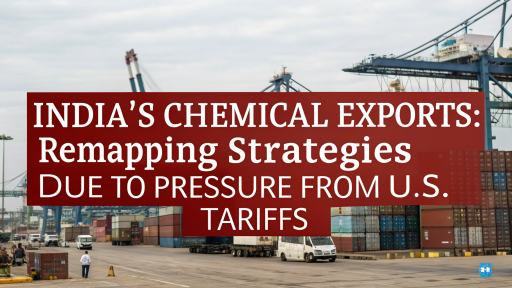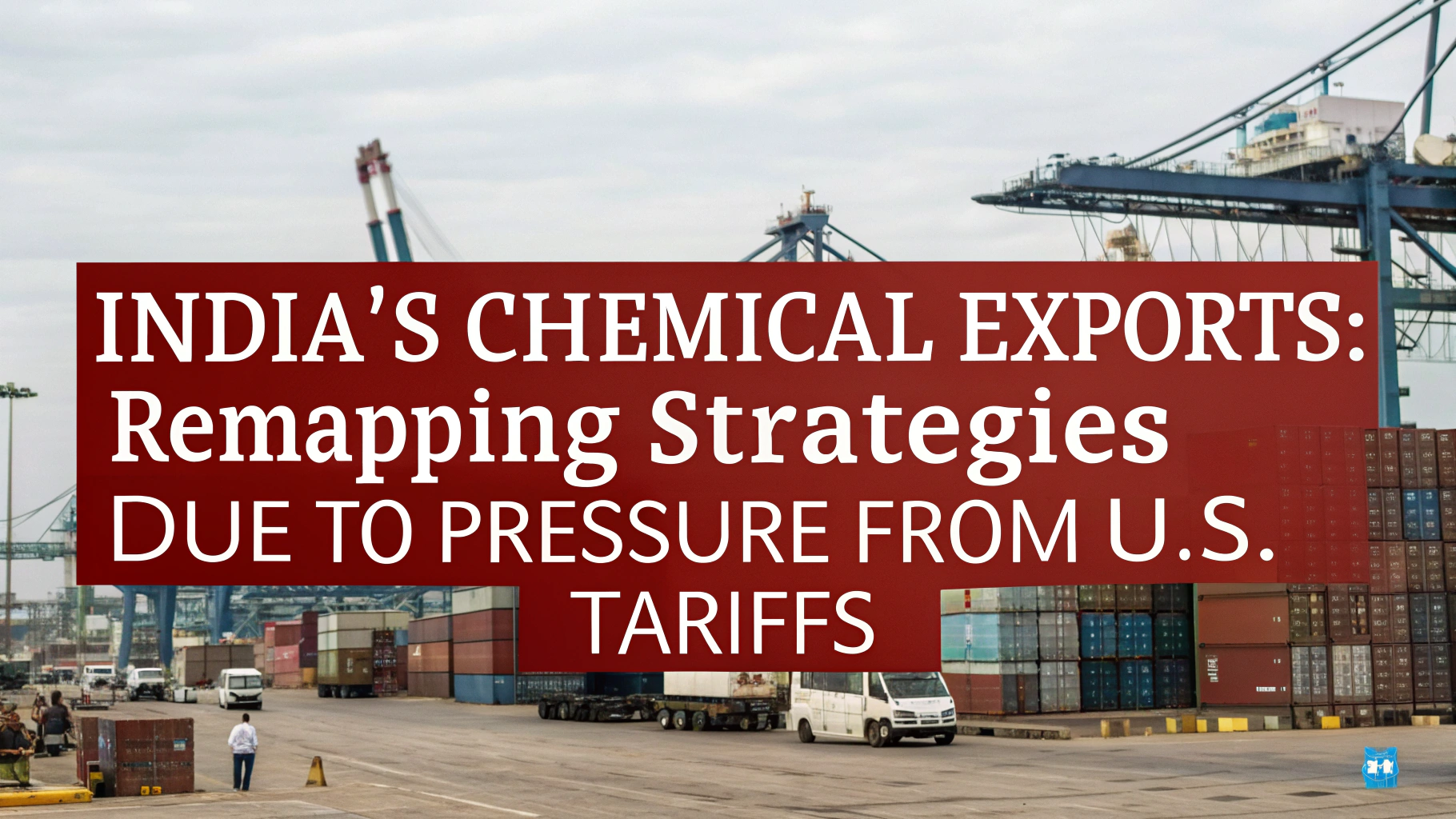The United States is imposing severe trade barriers, which are set to reshape business as usual for chemical exports in India. It is set to occur during the year 2025. Exporters in India, particularly in the basic, specialty, and value-added chemicals, need to rethink their business game plans in the face of new trade challenges.
On the bright side, there are new markets in ASEAN, LAC, and Africa that need to be explored. Taking advantage of these markets means that Indian chemical companies would not only soften the impact of trade restrictions posed by the U.S, but greatly expand their presence on the international stage.
Analyzing the U.S. Tariff Landscape
The U.S. trade policies have affected the chemical export industry and the chemical manufacturing industry. They have raised the tariffs on certain chemical imports, which severely reduces the competitive advantage Indian exporters had, especially in organic and inorganic chemicals as well as in specialty formulates of the manufacturing and consumer goods industries. Exporters that rely on the U.S. market face a serious hit due to lower profit margins and higher pricing pressures.
Related: Winning Indonesia’s Chemical Market: AITIGA Strategies for Indian Startups
Why ASEAN, LAC, and Africa Provide Fresh Opportunities
Even though the U.S. and the EU are still key markets, these other regions are brimming with potential:
- ASEAN: The industrial and urban growth in countries like Vietnam, Indonesia, and Thailand is creating a new market for chemicals in construction, electronics, textiles, and consumer goods.
- Latin America (LAC): With a focus on infrastructure and industrial diversification, Brazil, Chile, and Mexico are new markets for specialty and performance chemicals.
- Africa: Economies in East and West Africa are developing quickly, creating a new market for industrial chemicals, agrochemicals, and ingredients is consumer products.
Check our Handbooks for more information
These Opportunities Carry Significant Importance for The Chemical Industry
The strengths of these regions are in India’s exports:
- Agrochemicals – Expanding agricultural industries in these regions are in need of fertilisers, pesticides, and micronutrients.
- Specialty Chemicals – Ingredients for several industries, including cosmetics are in demand, and India is a leading supplier.
- Industrial Chemicals – Construction additives, performance polymers, and water treatment chemicals.
- Green & Sustainable Chemicals – Plant-based active ingredients, biodegradable plastics, and bio-based solvents.
Projected Growth In Demand
Analysts project that the ASEAN chemical market will grow annually by 5–6% over the next five years. Forecasts estimate LAC’s chemical market will expand at a rate of 4–5%. In Africa, rising industrial development and infrastructure expansion are expected to drive chemical import growth beyond 6% per year. Indian exporters enjoy a favorable position due to low-cost manufacturing, a wide range of goods, and the capability to customize products for local market demands.
Related: Starting a Fine Chemicals Business: Top 10 Most Demanded Specialty Chemicals
Streamlined Manufacturing Process Outline – Example: Formulation of an Agrochemical
- Raw Material Procurement – Seek out active ingredients and inert carriers.
- Pre-Mixing – Combine the materials within a specific climate.
- Formulation – Blend, granulate, or emulsify for the product per the requirements.
- Quality Testing – Confirm chemical stability, purity, and efficacy.
- Packaging – Global region-specific portion sizes and formats.
- Compliance – Ensure all regulations of the importing country are met.
- Export Logistics – Coordinate the supply chain for delivery to the overseas market.
Strategic Suggestions for Diversifying Exports
- Market Research – Evaluate the area of focus for the presence of demand, regulations, and competitors.
- Product Adaptation – Change formulations, packaging, and labeling to match local customs.
- Partnership Development – Form partnerships with local distributors, agents, and industrial buyers.
- Government aids – Take advantage of export promotion schemes and subsidies for trade fair participation.
- Brand Positioning – Market the quality, compliance, and sustainability credentials of the brand.
For more information, check out this related video
How NPCS Can Help Entrepreneurs
NPCS prepares Market Survey cum Detailed Techno Economic Feasibility Reports for setting up new industries or businesses. We prepare such reports for manufacturing industries, detailing the processes, raw materials, plant layout, and complete financial projections. NPCS helps entrepreneurs assess how feasible and profitable their businesses are, providing them with the information they need to make smart decisions and succeed in challenging market environments.
Find the Best Idea for Yourself With Our Startup Selector Tool
Conclusion
While the change in trade policy poses a problem for chemical exporters in India, it does serve as a strong incentive to look for new growth markets. The ASEAN region, LAC, and Africa look to be providing strong demand and growing economies, and diverse opportunities for Indian manufacturers to strengthen their foothold in the global market. There are opportunities for MSMEs and new startups to utilize the imposed tariff pressures by systematically diversifying exports and leveraging India’s manufacturing prowess to expand globally.
Data Source: Basic Chemicals, Cosmetics & Dyes Export Promotion Council (CHEMEXCIL), set up by the Ministry of Commerce & Industry, Government of India.







